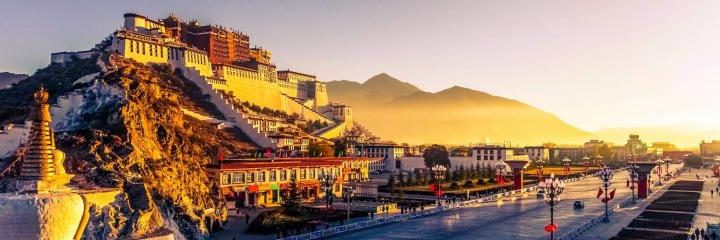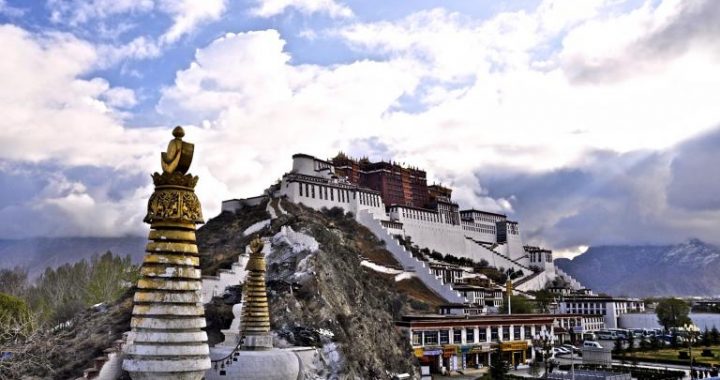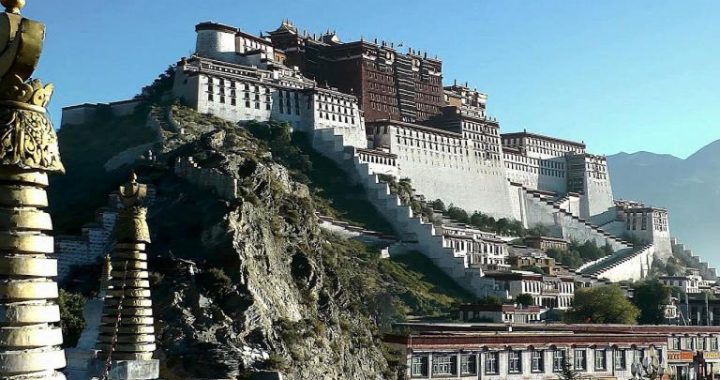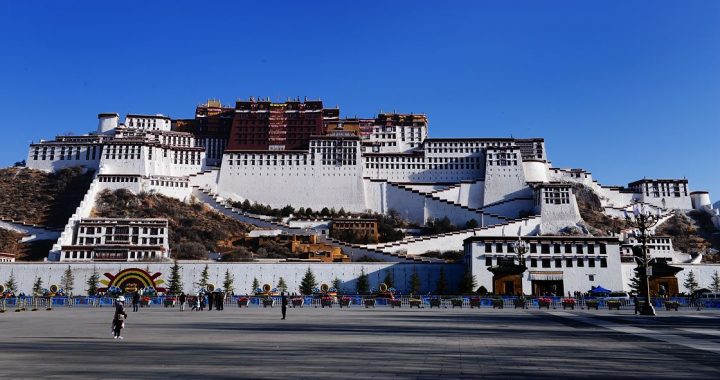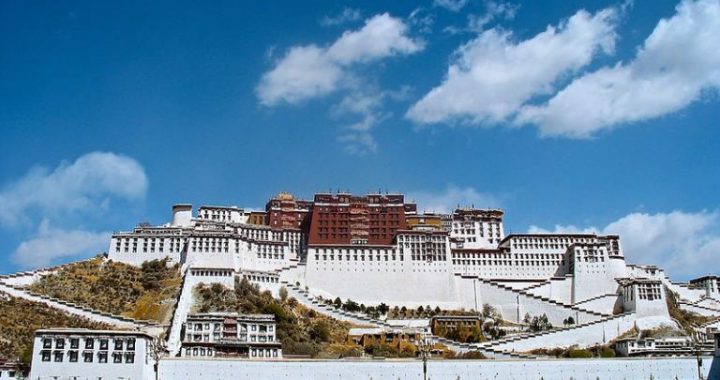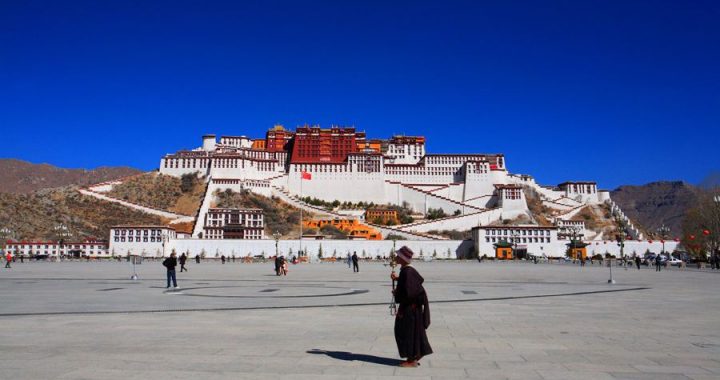Potala Palace
4 min readLhasa is the capital of the Tibet Autonomous Region and the city at an elevation of more than 3,700 meters above the sea level is the highest in the world.Lhasa is also called”City of Sunshine”due to the sunny days all year round.The word Lhasa in Tibetan means”a sacred land”or”a paradise”.Once in Lhasa,first thing that comes into your view will be the imposing and magnificent Potala Palace.Situated on the Red Hill looming over the whole Lhasa city,it is a sacred place of Tibetan Buddhism and the symbol of Lhasa.The construction of the world famous Potala Palace was started in the 7h century of the Tang Dynasty on the order of the Tubo King Srontsan Gambo for his wife Princess Wen Cheng from the Tang royal family.
The palace is 117 meters high and about 400 meters wide from east to west. It has 1000 rooms, and 9 stories which cover an area of 10 000 square meters. There are grand palaces within palaces. It has towering buildings with golden roof. It is recognized as the world’s highest and largest castle palace and also a fascinating mixture of the Han and Tibetan cultures and arts.
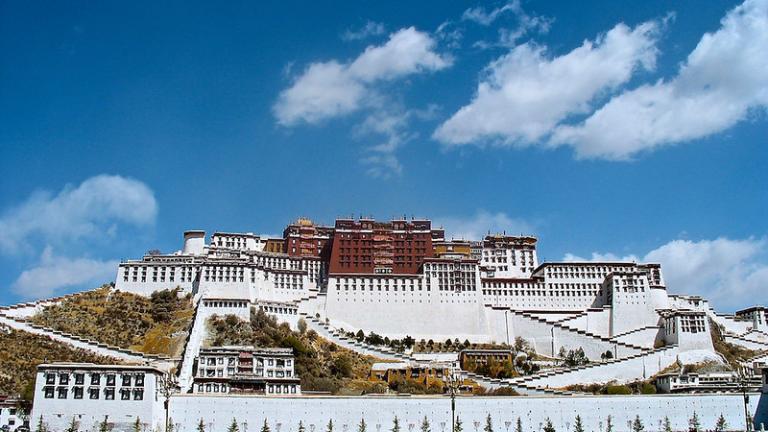
The palatial construction of Potala Palace falls into four parts: the Red palace and the White Palace on top of the Red Hill, and the Dragon King’s Pond behind the Hill, as well as the”Snow”at the foot of it.
The White Palace used to be a place where the living Buddha, Dalai, Tibet’s religious leader, lived and handled government affairs. The 7-storey White Palace, Dalai Lamas’ winter residence, also housed the former local Tibetan government.
There the most spacious hall, the eastern Audience Hall occupies a central area of 717 meters on the 4h floor. It was there that the Dalai Lamas were enthroned as supreme Tibetan Buddhist spiritual leader and the region’s temporal ruler. The 5hand 6h floors bore government offices and rooms for the officials. Two particular apartments on the top floor, reserved for the Living Buddhas, were known as Eastern and Western Sunshine Apartments for their long access to sunlight.
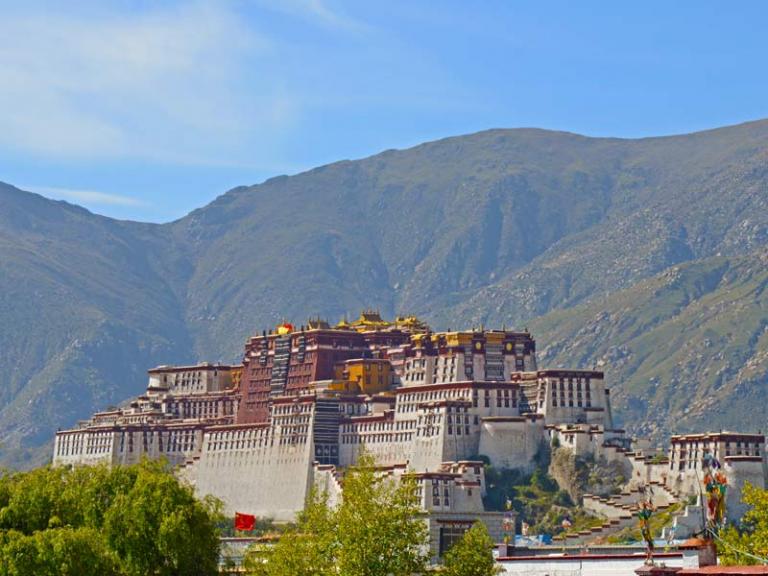
In contrast with the White Palace, the Red Palace consists of the Hall of the Buddha, the Scripture Hall and the Memorial Hall. The Hall of the Buddha houses gilded portraits of Sakyamuni and deceased Dalai Lamas. The Scripture Hall keeps a large number of early copies of Buddhist sutras. And the Memorial Hall contains stupas of the 13 late Dalai Lamas. It witnessed the life of the Dalai Lamas and the important political and religious activities in the past centuries. Both the White Palace and the Red Palace are named by the color of the walls.
In rear of the Potala Palace, there lies a garden known as Dragon King’s Pond, which is three kilometers in circumference. In the center of the lake there is an islet where the Dragon King Palace and the Elephant Cell are built. It is the garden of the Potala Palace.The lake came into being when Dalai Lama V dug the earth to build the Potala Palace.Beautiful flowers and lush trees are here and there,presenting quiet environment.
The”Snow”is situated at the foot of the Red Hill.”Snow”means “subordinate”in the Tibetan language.Subordinate constructions to the Potala include the Lam-royal Abbey,the Senior Seminary,the monks’dormitories and the eastern and western courtyards on the hill,while at the foot of the hill stands the houses once occupied by the local government bureaus and institutions,the printing press for Buddhist canonical writings as well as a jail,the stables and the backyard garden.The whole group of the buildings is enclosed by walls and guarded by pillboxes.
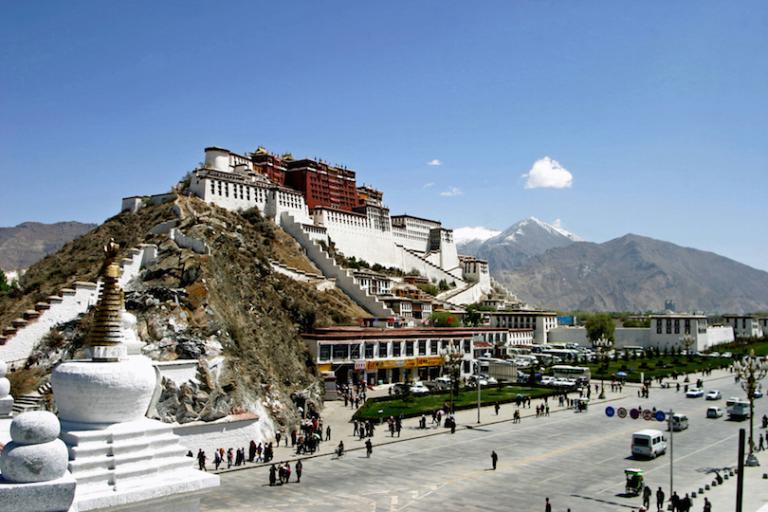
Since 1959 the central committee of the Chinese Communist Party and Chinads State Council have made earnest efforts to repair and protect the Potala.While there have always been annual allocations for the maintenances,special funds were granted to Tibet in 1988 for large-scale repair.The project started in October of the following year.The 5-year fraternal cooperation of the Tibetan and Han engineers and buildersled to the final success of the project and the gold and silver artifacts,porcelain vessels,enamelwork,jadeware,brocade and other handicraft articles preserved in the Potala are enormous and richly diversified.The Potala’s consequent re-emergence as a national cultural monument to attract increasing numbers of Chinese and foreign visitors.The Potala Palace has also been inscribed on the World Heritage.List by UNESCO.
